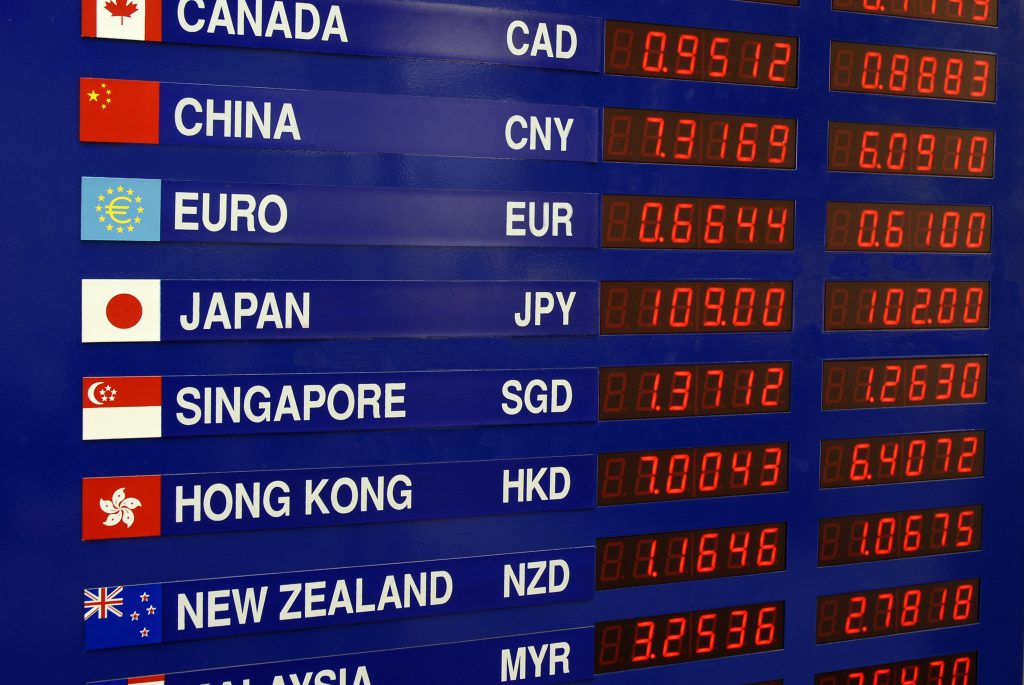Amidst reports that the US Federal Reserve might soon halt its stricter policy following sustaining interest rates unchanged, nations in Asia climbed in ranks on the ratio to the US dollar, causing the peso to bounce sharply in the most recent back-roll and briefly return to the 55 to $1 level. This can also mean a few things for entrepreneurs and businesses in the country. As the Philippine peso rises to 55:1, supply and demand changes have also yet to produce changes in the expenditures and investments of the country.

Status of the Philippine Peso on a Global Scale
The Philippine peso has been hovering inside the 56 to $1 range since the previous year, when it nearly touched the 57 to $1 value on multiple occasions. This is because the Bangko Sentral ng Pilipinas (BSP) has begun proactively intervening in the foreign exchange market to reduce turbulence.
International Trade Stats of the Philippine Peso
The local currency gained 20 centavos from its earlier finish of 56.12:$1, completing the current week’s trade at 55.92 per US dollar. Its peak day-to-day performance was 55.89:$1.
What is a Conversion Rate in money?
Conversion rates, which indicate what amount of a specific currency needs to be converted for a comparable amount of another, are ratios between two currencies that are most frequently employed in foreign exchange markets.
What do conversion rates have to do with the Philippine Peso?
A conversion rate shows the amount of supply compared to demand for all currencies since it expresses the market value of a specific currency in terms of the next. The general state of the financial system, inflation, and monetary regulation of a nation are frequently factors that influence both supply and demand.
How does the currency conversion affect decreases in values?
A currency’s value decreases, and it loses appeal in foreign exchange markets if the amount of money that is readily available exceeds the requirement for its use by investors or buyers. The conversion rate of that currency in relation to other currencies may, therefore, rise.
Why won’t we just produce more money?
In an attempt to control the convertibility ratio, a monetary authority or central bank may take action to raise or lower the amount of capital in circulation in the country. The government of the nation may order such for the purpose of implementing constraint or macroeconomic stimulation, although financial institutions do have some influence over production adjustments.
How does the Balance of Trade (BOT) affect the Philippine Peso?
A country’s monetary policy is one element that affects demand. Currency consumption may rise in tandem with a boost in the current interest rate on currency. It is possible for people and institutions to favor holding investments in that particular currency over others. The balance of trade (BOT), the public’s view of the threat of inflation, and political equilibrium are other variables that might affect rates of exchange.
Strengthening vs. Weakening of Philippine Peso
The terms “appreciating” and “strengthening” refer to a currency’s increased rate of exchange, which makes it trade with a greater quantity of foreign currencies, and “weakening,” which refers to a currency’s decline in exchange rate, which makes it trade for fewer various currencies.
Is a “stronger” Philippine Peso necessarily better?
The idea that a “stronger” or “appreciating” currency is always preferable to a “weaker” or “depreciating” currency is one of the most widespread misconceptions regarding the value of currencies. A currency that is more powerful can buy more other currencies, which helps some people in the economy while hurting others. Robust currencies are distinctive yet not always preferable.

How does the appreciation of the Philippine Peso affect business profits?
The majority of senior executives are aware that foreign currency-denominated financial obligations and company assets may have a negative dollar worth due to fluctuating exchange rates. Few people are aware, though, that fluctuations in exchange rates can significantly affect earnings from operations.
Managers have been tasked with monitoring this operational vulnerability by fewer firms. However, a thorough grasp of operating exposure is crucial for making many decisions, as it frequently accounts for a significant portion of the variation in operating profits from year to year.
Improving business operations amidst fluctuations in the Philippine Peso
Over time, managers should consider operating exposure when formulating global product plans and strategies. Knowing your operating surroundings will help you make better judgments in the short term. Currency exchange implications should also be considered after the corporate organization and its leadership team have been evaluated, as they are beyond the purview of management.
What is Operational Exposure?
Conventional exposure to currency assessment concentrates on commercial items on the financial statements impacted by modifications to conventional exchange rates, such as debt, receivables, and arrears issued in foreign currencies. To protect itself against this contractual risk, the business may enter through forwarding agreements.
How can the Philippine Peso continuously produce profit amidst fluctuations in international exchange rates?
Businesses that operate internationally are impacted in numerous ways by changes in currency rates. Foreign currency fluctuations can have a significant negative effect on business margins, and it might take time to monitor exchange prices continuously.
For instance, if your company offers goods or services in another nation, a shift in the price of currency will directly affect your revenue. You may earn less money for your goods or services than you anticipated if the exchange rate swings negatively because your clients will be paying in their local currency.
Volatility of Philippine Peso
The cost of supplies imported from other nations is affected by fluctuations in currency rates, and the worth of a product also affects its appeal to consumers outside. A lower volume of imports could result from the depreciation of your native currency, which raises the cost of acquiring items.
Understanding the economics behind the Philippine Peso
Exchange rate fluctuations can have a significant negative impact on a company’s profits, but they can also be advantageous if managed strategically. The ideal method to guarantee that your earnings are shielded from fluctuating exchange rates and transfer costs is to collaborate with a foreign exchange firm to create a monetary strategy specific to your company’s needs and execute your overseas movements.
The Philippine Peso in a Globalized Market
The advancement and globalization of innovation have brought about a major shift in the position of entrepreneurs as the world grows more linked. While there are many advantages to globalization for entrepreneurs, such as a wider market for them to sell their items in and the chance to compare prices of products from around the globe, there are also many new difficulties that come with it.

Accurate models and precise outcomes will likely be unachievable, considering the intricate interplay involving monetary swings and other variables impacting demand and competition. This unpredictability emphasizes how important it is for operating directors and business leaders to have open lines of communication in order to more fully comprehend these risk factors and plan ahead for potential fluctuating exchange rate circumstances.
This dialogue will increase the company’s awareness of its possible reactions while also providing a stronger foundation for the analysis conducted after the event. Ultimately, a prudent reaction to the risk of fluctuating currency rates will increase returns while lowering hazards.









